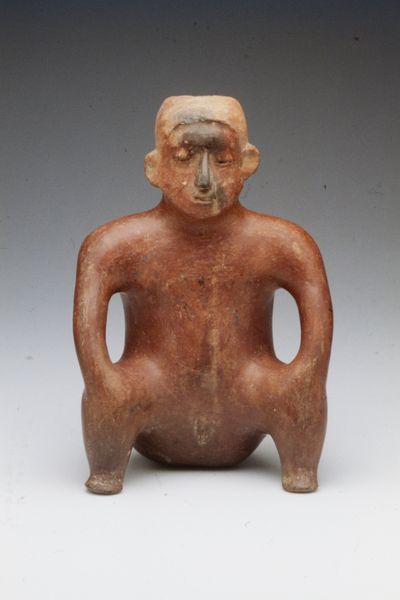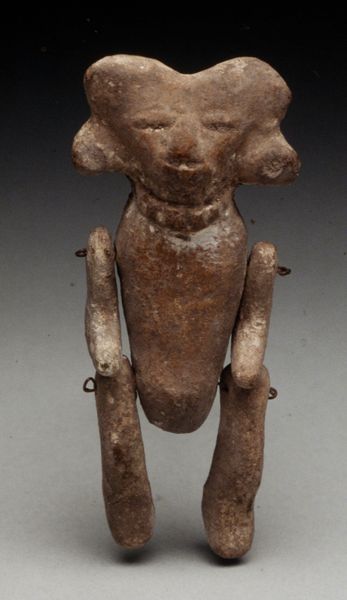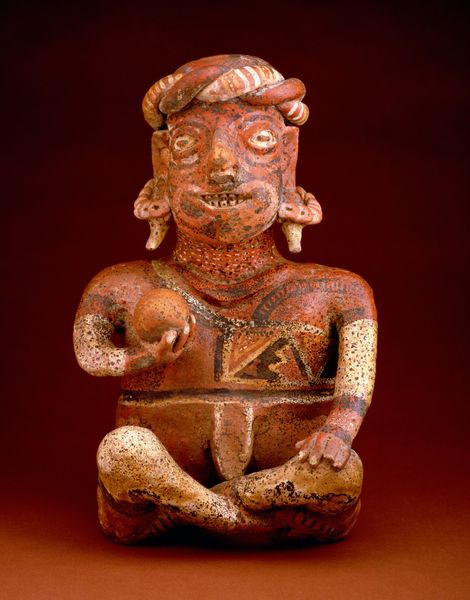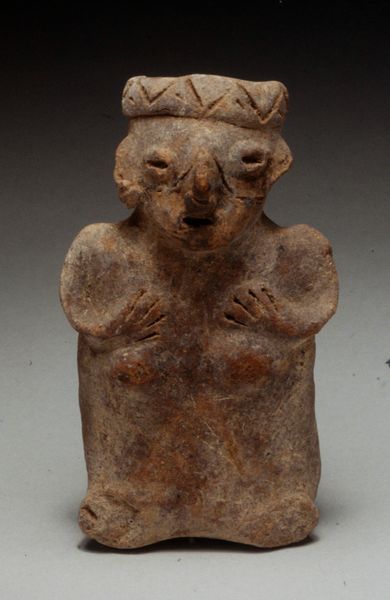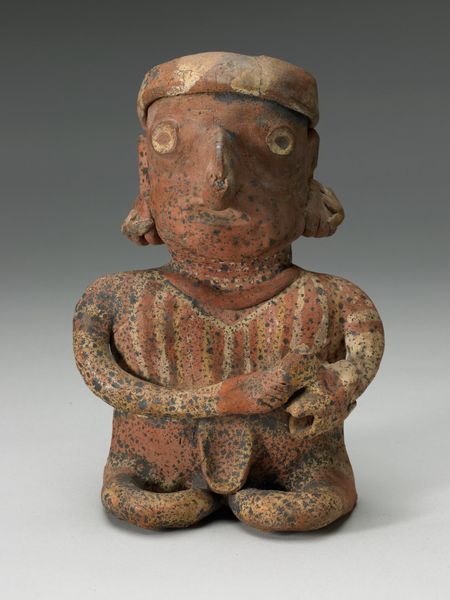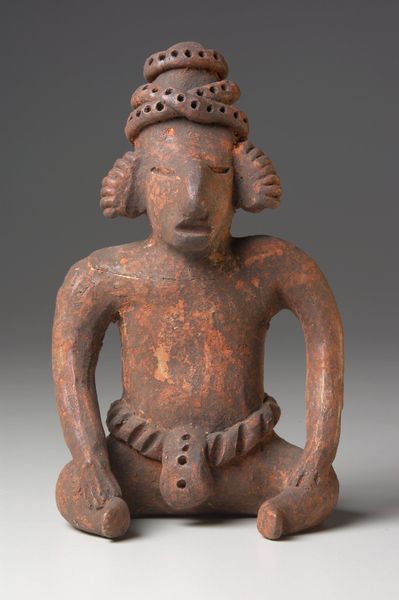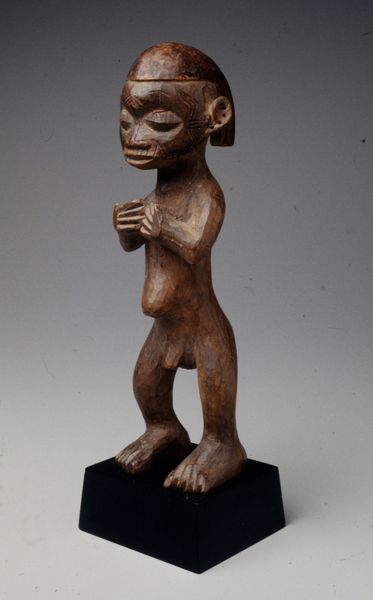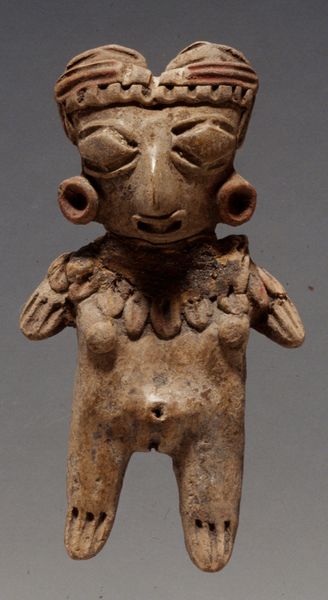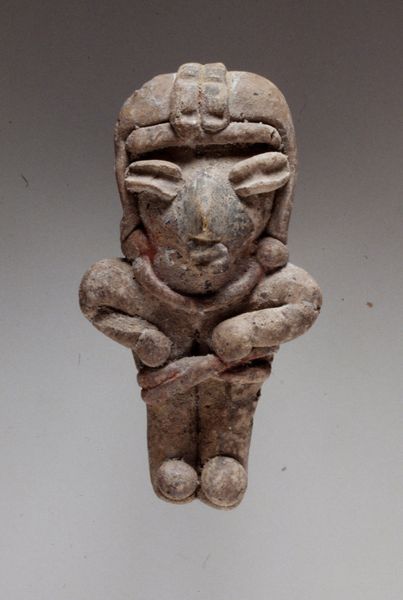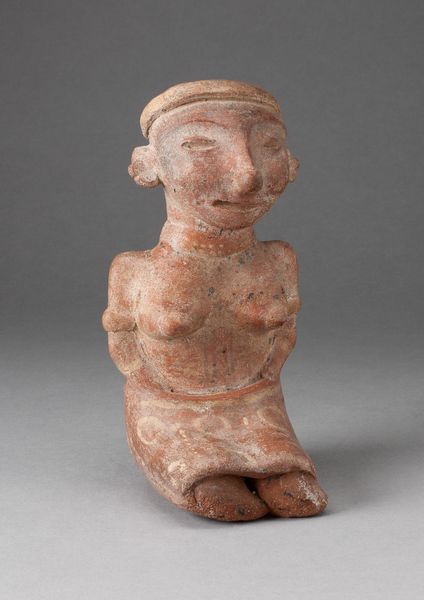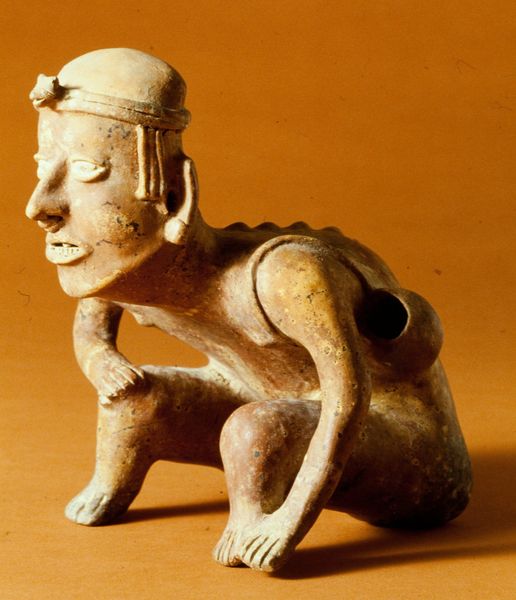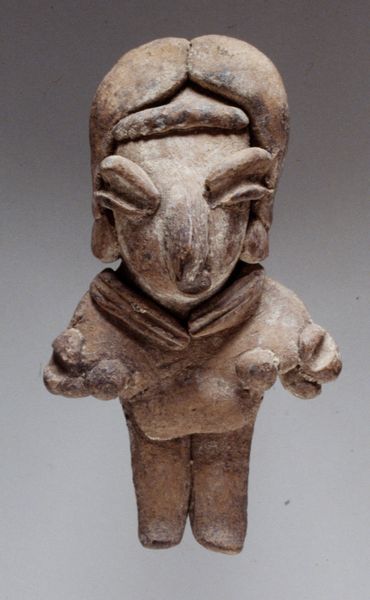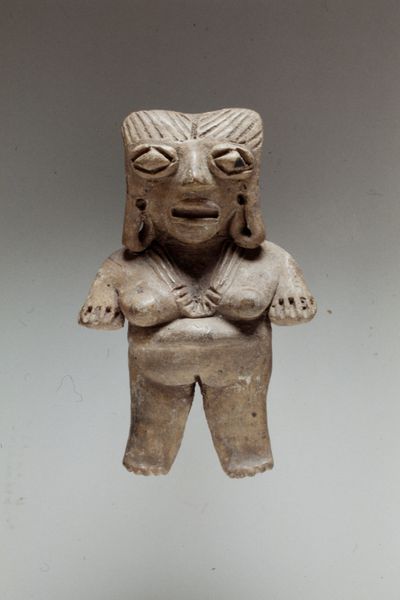
sculpture
#
portrait
#
sculpture
#
figuration
#
sculpture
#
charcoal
#
statue
Dimensions: 19 cm (height) x 12 cm (width) x 14.3 cm (depth) (Netto)
Curator: Svend Rathsack's "Resting Malay Man," created in 1921, offers a fascinating glimpse into a colonial encounter viewed through a portrait lens, specifically rendered as sculpture. Editor: Immediately, the roughness of the medium strikes me. The sculpture seems grounded, connected to the earth—it feels almost urgent, like something quickly made yet deeply considered. I wonder about the physical process. Curator: Absolutely, and I think the material plays a significant role in conveying meaning. Constructed from wood, with potential charcoal additions, the sculpture participates in the racialized politics inherent in ethnographic depictions. We must acknowledge the power dynamics embedded in representing a "Malay Man" within a Western art context, particularly through its means of making, which suggests both care and an imposed objectification. Editor: I’m very interested in Rathsack's choice to use wood; a material worked by human hands. Wood carries inherent associations, but also signifies labour—a social activity. And in this form, as sculpture, he is monumentalizing this encounter and transforming it into an object of contemplation and potential exchange. It raises important questions about the conditions of artistic production during the colonial era. Curator: Indeed, it makes one question the politics behind indigenous representation. He has been deliberately styled and, I find, reduced by an outside eye. Is it art, or documentation? We should not lose sight of the social implications in ethnographic artistic interpretation, especially concerning cultural sensitivity, because artistic representation plays a role in how we create societal attitudes. Editor: And by framing the work in the light of materiality and context, hopefully, we're opening a necessary conversation about the relationship between the maker, the materials, and the subject—forcing a reassessment of colonial perspectives in art history. Curator: Exactly. I'm glad that we got a chance to situate this work, beyond pure aesthetic value, into wider discourse regarding intersectionality in art history. Editor: Agreed. Examining this via a materialist approach has definitely deepened my insight. Thank you.
Comments
No comments
Be the first to comment and join the conversation on the ultimate creative platform.
